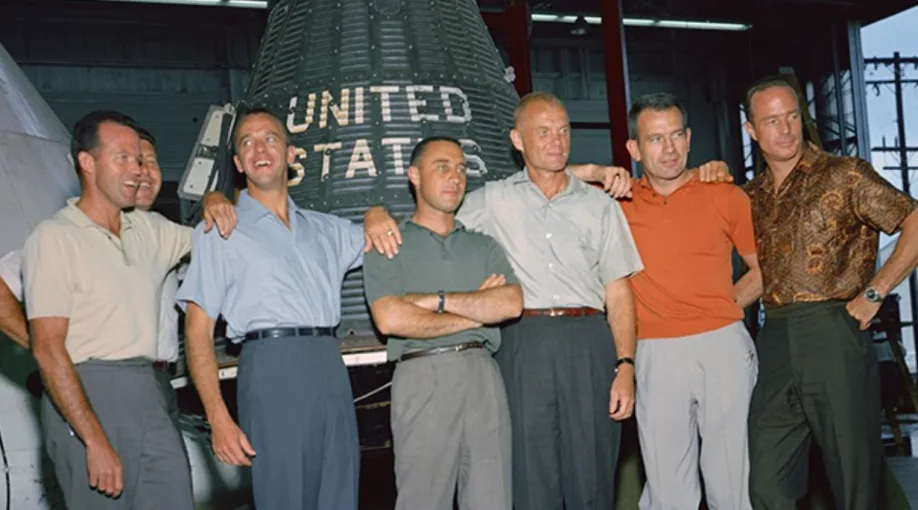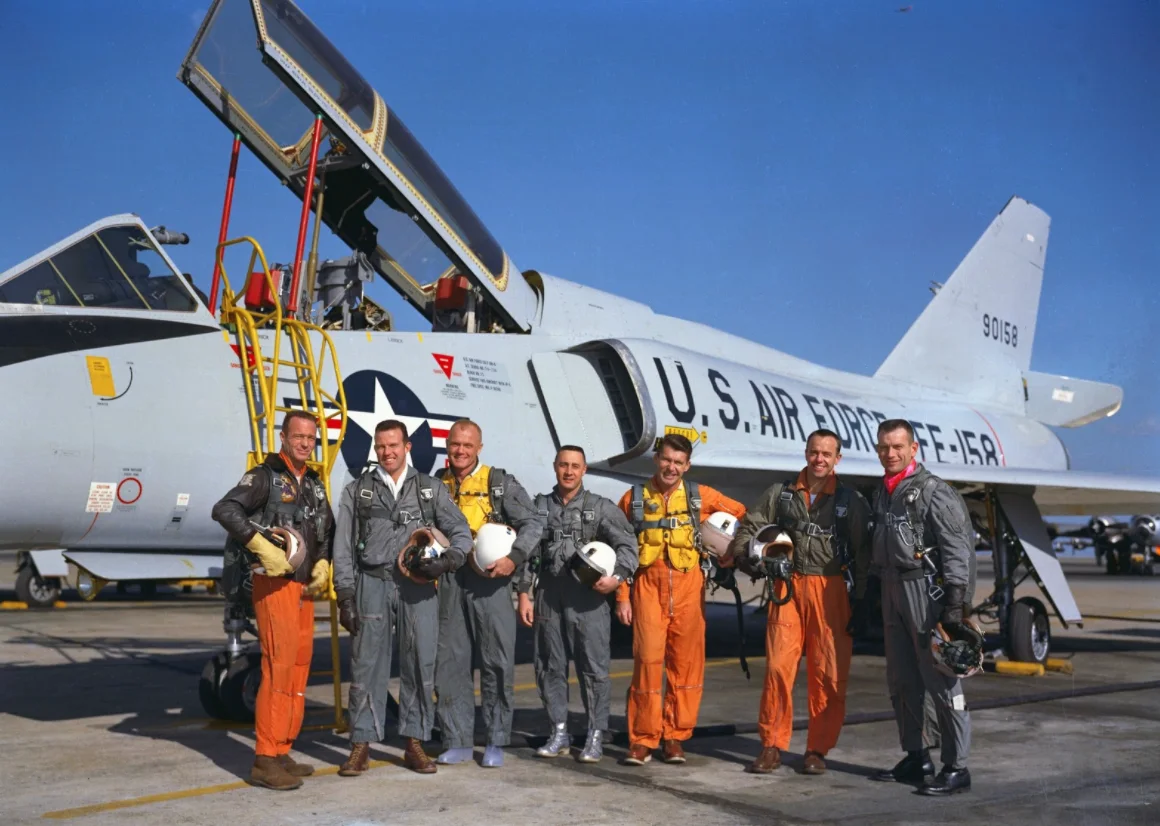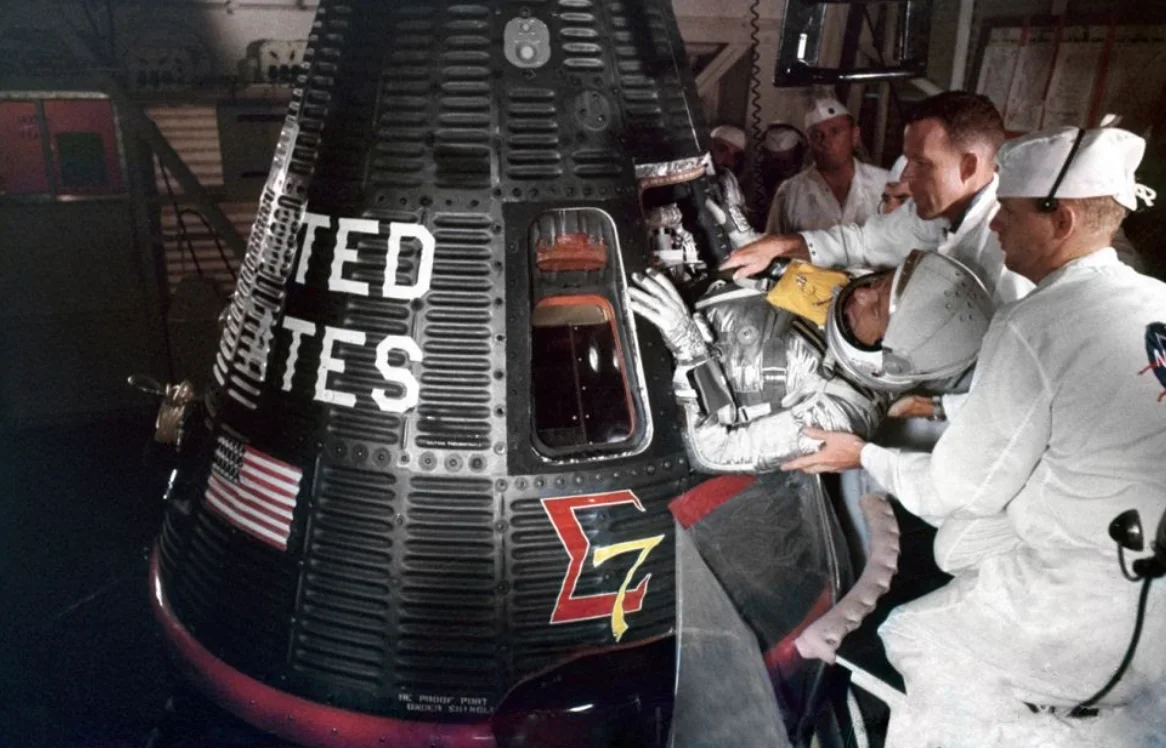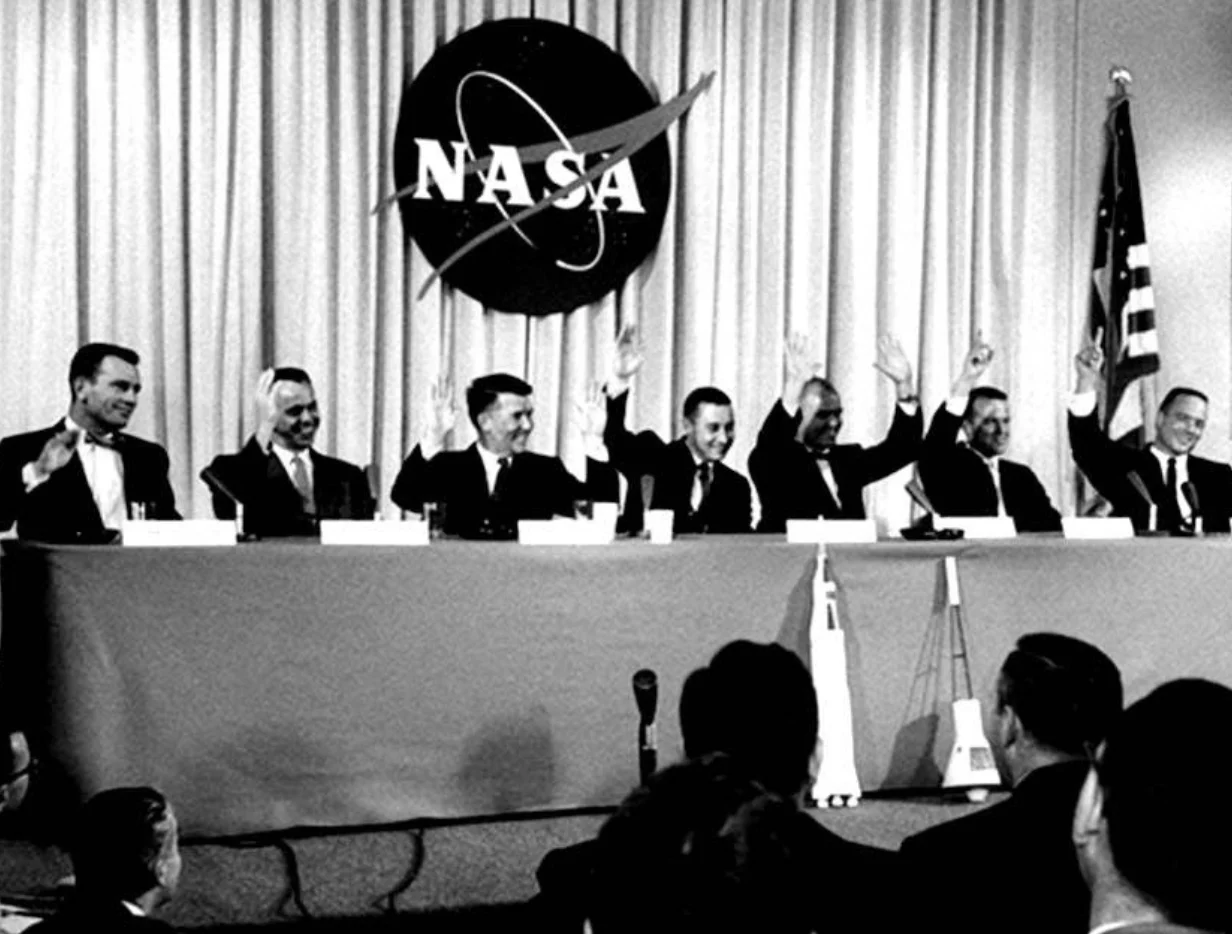
Arduous selection process of the Mercury Seven — NASA's first astronauts
On this day in weather history, the first American astronauts were introduced to the world.
This Day In Weather History is a daily podcast by Chris Mei from The Weather Network, featuring stories about people, communities and events and how weather impacted them.
In the 1950s, the U.S. and the U.S.S.R. were in a "space race." The U.S.S.R. started strong by successfully launching the world’s first artificial satellite, Sputnik, into Earth’s orbit.
The Americans responded by consolidating their military and civilian space efforts into the National Aeronautics and Space Administration (NASA). The U.S. wanted to be the first to send a manned vehicle into space.

The Mercury Seven in front of an F-106 Delta Dart. Courtesy of NASA
In January 1959, NASA started the process of selecting their astronauts, and it was quite the process. NASA began with a pool of 508 military test pilots and shortened the list to 110 candidates.
[Click here to subscribe to This Day in Weather History][1]
The candidates were split up into three groups, and two of them were sent to Washington. Because there were so many volunteers to continue through the process, the third group was cut.
From those 62 volunteers, 36 men made it to the next step, after being eliminated by a series of physical and mental exams. The volunteers were given some more details of the physical and mental tests they would have to endure, so four men dropped out.

Courtesy of NASA
At the Wright Aeromedical Laboratory in Dayton, Ohio, the volunteers underwent six days of extreme stress tests (torture is probably closer to an accurate description...like two hours in a 54°C chamber).
Eighteen men made it through.
From there, a committee went in to pick the top six men who would become NASA's first astronauts and came out with seven -- the Mercury Seven.
On Thursday, April 9, 1959, NASA introduced the Mercury Seven to the world: Scott Carpenter, Gordon Cooper, John Glenn, Gus Grissom, Wally Schirra, Alan Shepard, and Deke Slayton.

Introduction of Mercury Seven. Courtesy of NASA
On Wednesday, April 12, 1961, the U.S.S.R. sent cosmonaut Yuri Gagarin to orbit the Earth in the world’s first manned space flight.
Shepard wasn't far behind, as he was launched into space on a suborbital flight on May 5. Glenn became the first American to orbit Earth on Tuesday, Feb. 20, 1962.
From then on, the Soviets took the lead in space exploration until Sunday, July 20, 1969, when Neil Armstrong, Michael Collins, and Buzz Aldrin became the first people to land on the moon.
To learn more about NASA's first seven astronauts, listen to today's episode of "This Day In Weather History."
This Day In Weather History is a daily podcast by The Weather Network that features unique and informative stories from host Chris Mei.
Subscribe to 'This Day in Weather History': Apple Podcasts | Amazon Alexa | Google Assistant | Spotify | Google Podcasts | iHeartRadio | Overcast'
Thumbnail: "The original Mercury astronauts in June 1963 at the Manned Spacecraft Center (MSC), now Johnson Space Center, in Houston, Texas. From left-to-right: L. Gordon Cooper Jr., Walter M. Schirra Jr., Alan B. Shepard Jr., Virgil I. Grissom, John H. Glenn Jr., Donald K. (Deke) Slayton and M. Scott Carpenter." Courtesy of NASA